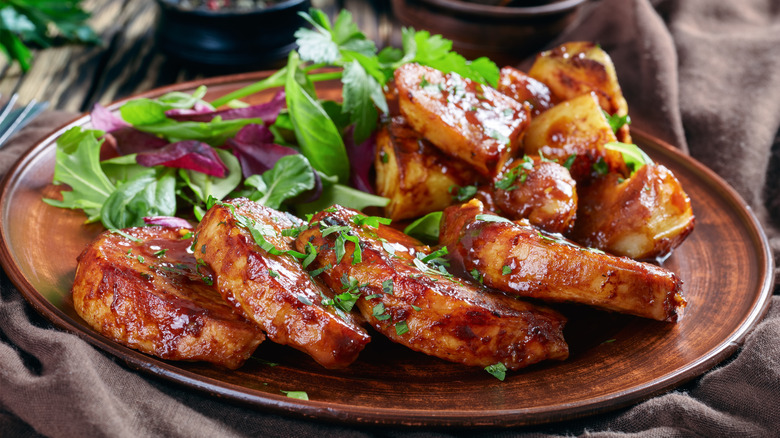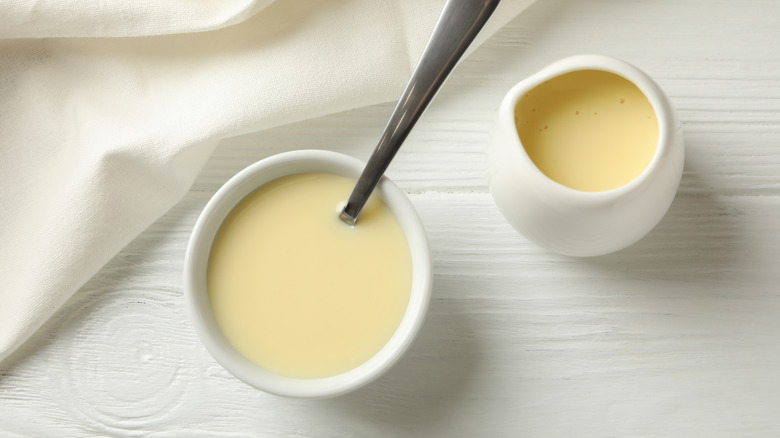Sweetened Condensed Milk Is The Secret Ingredient For Perfectly Caramelized Pork
If you've ever cooked pork in a pan all by itself — without any oil, sauce, or spices — you'll notice that it doesn't exactly look too appetizing by the time it's finished cooking. Rather than a caramelized golden brown, the meat usually ends up being a white or grayish color. While the main purpose of seasoning pork is to add flavor, it also plays a major role in caramelization: Without it, you'll be left with a fairly bland, colorless cut of meat.
Caramelization occurs anytime you cook foods that contain natural sugars, such as fruits and vegetables, most notably onions. Most meat, on the other hand, doesn't contain any natural sugars. Browning can still technically occur, but it's actually caused by the proteins breaking down: a process called the Maillard reaction, which is different from caramelization. In order to caramelize meat (or any food with no natural sugars) you simply have to add sugar. To accomplish this, most people use meat marinades that contain ingredients like honey, molasses, and brown sugar, but if you're cooking pork, it turns out all you need is sweetened condensed milk.
What is sweetened condensed milk?
Anyone who bakes is probably already familiar with sweetened condensed milk because it's a common ingredient in many desserts and baked goods. It's a thick, syrupy liquid made from milk that has been pressure cooked until about 60% of the water has evaporated out. Once this occurs, the milk is sweetened with sugar and canned for use in different recipes. Contrary to what its name suggests, all condensed milk is sweetened condensed milk, and there's no such thing as unsweetened condensed milk. Condensed milk without the added sugar is actually another product called evaporated milk.
Because regular milk has natural sugars in it, evaporated milk contains 10% sugar. But while this can produce caramelization if you add it to pork, it's not nearly as effective as condensed milk. The combination of natural and added sugar brings condensed milk to 55% sugar, making it ideal for caramelizing pork.
What happens when you add condensed milk to pork?
Cooking pork with an ingredient that's normally used in desserts might seem odd, but the truth is it's a fairly common practice in Mexican cuisine. To make pork carnitas tacos, for example, condensed milk is included for two important reasons. The sweetness balances out the other flavors — including the acidity of the citrus, the smokiness of the cumin, and the saltiness of the cotija — and at the same time it aids caramelization while keeping the meat juicy.
If you're making a dish that resembles Mexican cooking in some way, such as barbecued or smoked pork, then you can use condensed milk in pretty much the same way. Just bear in mind that caramelization won't occur if you steam or boil the pork, so make sure to cook your pork over the grill, in the oven, or in a pan to maximize the effects of the condensed milk.


